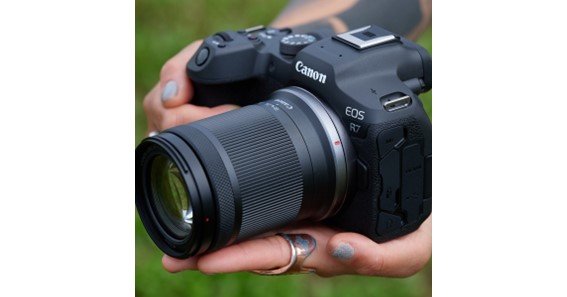The past ten years have seen unprecedented heights of creative expression made possible by advancements in camera technology. Modern cameras enable visual storytellers in several ways, including highly-resolution sensors, enhanced low-light capabilities, and adaptable lenses. The main benefits that modern camera and video camera offer to creative work will be discussed in this essay.
Superior Clarity of Imagery:
Their capacity to take incredibly high-quality pictures is one of the most significant improvements of modern cameras. With sensor resolutions of up to 50 megapixels seen in DSLRs and mirrorless camera, photographers may now crop closely or print large-scale images without sacrificing quality. Many consumer-grade video camera can record footage in 4K or higher resolution, giving them cinema-level quality as well. Hardly conceivable even a few years ago was the degree of resolution and fine detail modern camera capture. Rich image quality creates new creative possibilities, such as macro and landscape photography and architecture photography. Furthermore, it allows filmmakers to stabilize or reframe pictures in post-production without compromising pixel count.
Minimal-Light Operation:
The sensitivity to low light is another area in which camera have advanced. Whether it is a low-light performance, a nighttime skyline, or an indoor scene, more recent sensors are far better than their predecessors at capturing available light. Nowadays, some cameras can take pictures with less light than even professional cinema camera from ten years ago. As a result, moments that would have been too dark in the past may now be captured by photographers and videographers under almost any lighting situation. It moreover facilitates imaginative applications of synthetic lighting effects that were challenging to accomplish with outdated apparatus. Visual storytellers have greater flexibility in terms of when and where they can produce engaging material, thanks to low-light performances.
Modest Lenses:
The market for inventive new lens solutions has grown, along with the annual improvements made to camera bodies. Faster apertures, more advanced features like image stabilization, and sharper optics are all delivered in smaller, lighter packages by modern lens designs. Cine lenses that are on par with Hollywood production quality are now available to videographers. Super telephoto lenses can be used to get up close and personal with distant subjects, while ultra-wide lenses are useful for capturing landscapes. Additionally encouraging innovation from third parties are new lens mounts. Visual artists can tell almost any kind of story with the appropriate optical instrument because of the wide range of excellent lenses that are readily available.
Moving and Linking:
Additionally, compared to earlier models, today’s camera are far more portable and linked. With huge sensors and extensive functionality, mirrorless camera in particular have become lighter and smaller. Even though they are smaller, video camera is very strong. When their equipment isn’t a hindrance, photographers and filmmakers can move quickly on location. With built-in WiFi, Bluetooth, connectivity is even advantageous. This allows for the easy sharing of content from the camera to a tablet or smartphone. It’s quicker than ever to scout locations and do on-set evaluations. Mobility and connectivity enable visual storytellers to quickly and impulsively produce and present their creative visions to audiences.
Visual storytellers must advance in their use of the instruments at their disposal in tandem with the continued advancement of camera technology. To truly be a creative master, one must push boundaries, take chances, and discover novel methods to employ camera to convey original ideas. Technical proficiency is only the first step. While modern technology eliminates many barriers, it also creates new avenues for artistic exploration. The direction of this trip will not just be determined by advancements in camera, but also by the way visual artists use this potent tool to elevate their narrative.
Conclusion:
To put it briefly, the superior image quality, improved low-light performance, an array of interchangeable lenses, increased mobility, and enhanced connectivity of contemporary camera have completely transformed artistic expression. With the strong tools at their disposal today, visual artists may realize their most audacious ideas in novel ways. The potential for visual storytelling is going to be endlessly expanded as long as camera technology keeps developing annually.

